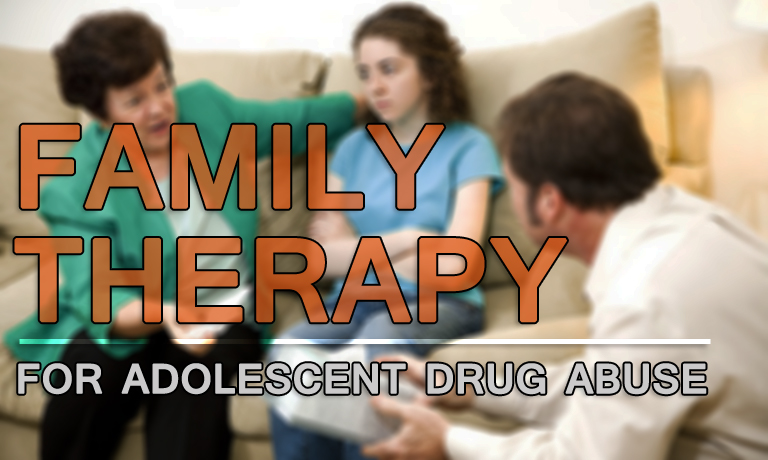
Brief Strategic Family Therapy (BSFT) is a brief intervention used to treat adolescent drug use that occurs with other problem behaviors. These co-occurring problem behaviors include conduct problems at home and at school, oppositional behavior, delinquency, associating with antisocial peers, aggressive and violent behavior, and risky sexual behavior (Jessor and Jessor 1977; Newcomb and Bentler 1989; Perrino et al. 2000).
BSFT is based on three basic principles. The first is that BSFT is a family systems approach. Family systems means that family members are interdependent: What affects one family member affects other family members. According to family systems theory, the drug-using adolescent is a family member who displays symptoms, including drug use and related co-occurring problem behaviors. These symptoms are indicative, at least in part, of what else is going on in the family system (Szapocznik and Kurtines 1989). Just as important, research shows that families are the strongest and most enduring force in the development of children and adolescents (Szapocznik and Coatsworth 1999). For this reason, family-based interventions have been studied as treatments for drug-abusing adolescents and have been found to be efficacious in treating both the drug abuse and related co-occurring problem behaviors (for reviews, see Liddle and Dakof 1995; Robbins et al. 1998; Ozechowski and Liddle 2000).
The second BSFT principle is that the patterns of interaction in the family influence the behavior of each family member. Patterns of interaction are defined as the sequential behaviors among family members that become habitual and repeat over time (Minuchin et al. 1967). An example of this is an adolescent who attracts attention to herself when her two caregivers (e.g., her mother and grandmother) are fighting as a way to disrupt the fight. In extreme cases, the adolescent may suffer a drug overdose or get arrested to attract attention to herself when her mother and grandmother are having a very serious fight. The role of the BSFT counselor is to identify the patterns of family interaction that are associated with the adolescent’s behavior problems. For example, a mother and grandmother who are arguing about establishing rules and consequences for a problem adolescent never reach an agreement because the adolescent disrupts their arguments with self-destructive attempts to get attention. Therefore, the third principle of BSFT is to plan interventions that carefully target and provide practical ways to change those patterns of interaction (e.g., the way in which mother and grandmother attempt but fail to establish rules and consequences) that are directly linked to the adolescent’s drug use and other problem behaviors.
Why Brief Strategic Family Therapy?
The scientific literature describes various treatment approaches for adolescents with drug addictions, including behavioral therapy, multisystemic therapy, and several family therapy approaches. Each of these approaches has strengths.
BSFT’s strengths include the following:
■ BSFT is an intervention that targets self-sustaining changes in the family environment of the adolescent. That means that the treatment environment is built into the adolescent’s daily family life.
■ BSFT can be implemented in approximately 8 to 24 sessions. The number of sessions needed depends on the severity of the problem.
■ BSFT has been extensively evaluated for more than 25 years and has been found to be efficacious in treating adolescent drug abuse, conduct problems, associations with antisocial peers, and
impaired family functioning.
■ BSFT is “manualized,” and training programs are available to certify BSFT counselors.
■ BSFT is a flexible approach that can be adapted to a broad range of family situations in a variety of service settings (e.g., mental health clinics, drug abuse treatment programs, and other social service settings) and in a variety of treatment modalities (e.g., as a primary outpatient intervention, in combination with residential or day treatment, and as an aftercare/continuing-care service to residential treatment).
■ BSFT appeals to cultural groups that emphasize family and interpersonal relationships.
What Are the Goals of Brief Strategic Family Therapy?
In BSFT, whenever possible, preserving the family is desirable. While family preservation is important, two goals must be set: to eliminate or reduce the adolescent’s use of drugs and associated problem behaviors, known as “symptom focus,” and to change the family interactions that are associated with the adolescent’s drug abuse, known as “system focus.” An example of the latter occurs when families direct their negative feelings toward the drug-abusing youth. The parents’ negativity toward the adolescent directly affects his or her drug abuse, and the adolescent’s drug abuse increases the parents’ negativity. At the family systems level, the counselor intervenes to change the way family members act toward each other (i.e., patterns of interaction). This will prompt family members to speak and act in ways that promote more positive family interaction, which, in turn, will make it possible for the adolescent.
